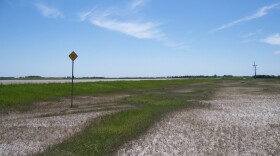Are the aspen leafing out near you? Do some seem to be busting out from winter while others, well, not so much? I am occasionally asked this time of year why there is so much variation in when the aspen leaf out, and also why this difference seems to occur in patches. Some have speculated the differences are due to variations in soil types, soils moisture, temperature, or perhaps exposure to sunlight.
Environmental factors certainly influence the timing of the various aspects of plant development, however, in this case it is not so much environmental, but genetic. Aspen seldom reproduces by seed. Aspen produces a light seed crop in most years, and occasionally heavier crops. And although seed viability generally remains high for eight weeks or so, the viability drops considerably after two to three weeks. Furthermore, the environmental conditions for the germination and establishment of the seedlings are quite restrictive (e.g. sunlight and moisture conditions). As a result, aspen seldom reproduces by seed, particularly in the western part of North America.
However, once an aspen tree has become established it generally reproduces vigorously from root suckers, and those suckers expand outward from the parent plant to form clonal stands. So, all the plants in a clone are genetically identical and are connected underground. It is in the spring when the aspen begins to leaf-out that these clonal stands are most easily identified. The casual observer will notice a patchwork of stands of aspen at differing stages of leafing out. Each piece of the patchwork is a clonal stand of aspen. So our aspen forest is not so much a forest of individual aspen trees, but more accurately is a mosaic or patchwork of many aspen clones. Differences in when the aspen leafs-out is perhaps the most obvious characteristic for us to observe, but there are certainly many other genetic differences between the clones that are less noticeable. And variations in environmental factors such as soil type and soil moisture are certainly influencing their growth both within and between clones.
Aspen is widespread in the state. They are quite common in several locations such as the Pembina Hills, Sheyenne National Grasslands, Turtle Mountain, Killdeer Mountains, several National Wildlife Refuges around the state, and of course Theodore Roosevelt National Park’s’ north and south units.
So, be on the lookout for the aspen leafing out, and make a point of observing differences in their development. The “clonal” differences are actually quite noticeable and interesting.




